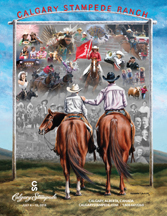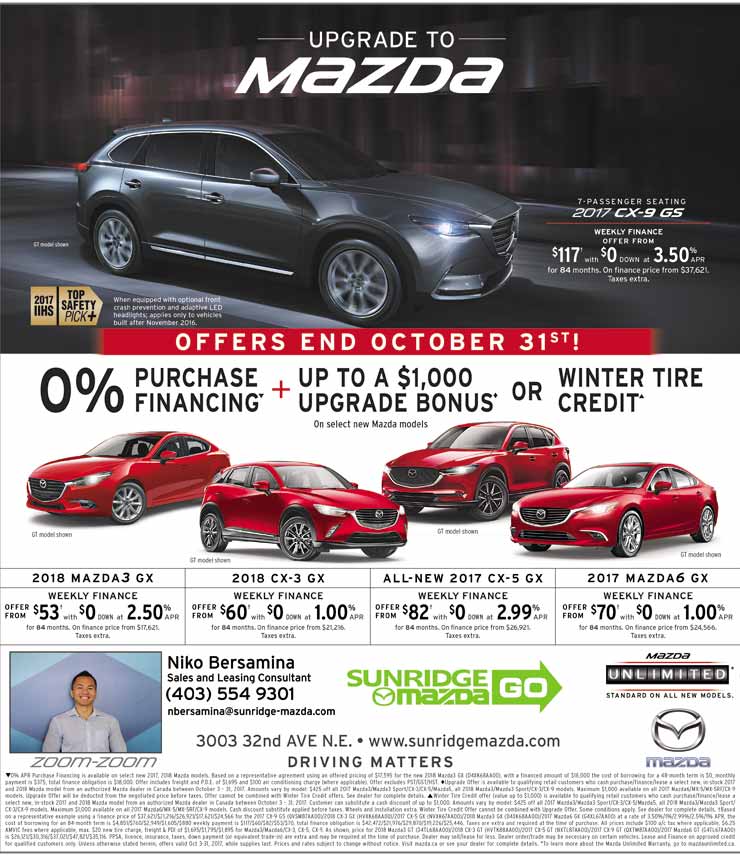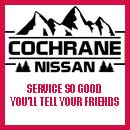- News Front Page
- Uncategorized
- Headline News
- Filipino Calgarian
- Business
- Pinoy Stories
- Community News
- Publisher's Note
- The Main Ingredient
- Views and Opinions
- Maikling Kwento
- Alberta News
- OFW – Month
- Travel News
- Health and Lifestyle
- Pinoy Toons
- Pinoy Spirit
- Entertainment
- The Philippine Lawyer
- Horoscope
- Greetings
- About Us
- Greetings From the Prime Minister
- Greetings from the President of the Philippines
- Greetings from the Premier of Alberta
- Greetings from the Mayor of Calgary
- Advertise With Us
- Disclaimer
- Subscription
Publisher's Note
- Publisher’s Note
 It was 22 years ago when I arrived in Canada and chose Calgary, Alberta to be my home. Leaving my family and friends behind, it was a new adventure for me to be in a new country without knowing anyone. That was the time I looked for a Filipino community paper and never found any, [...]
It was 22 years ago when I arrived in Canada and chose Calgary, Alberta to be my home. Leaving my family and friends behind, it was a new adventure for me to be in a new country without knowing anyone. That was the time I looked for a Filipino community paper and never found any, [...]
Visitors to Pinoytimes
Page added on May 19, 2011
How to Save Gas
(Based on my actual experience):
by: Gessen Cortes
Another long weekend is coming up, and a lot of us are probably going on road trips with friends and family. With the price of gas steadily rising again, all of us are feeling the pinch at varying degrees. I’m not gonna try to analyze the economics of all this madness, nor am I going to suggest some kind of miracle device for your engine. Let’s get real here, we cannot change our need for gas because we need to drive to work everyday, have some fun on Saturdays, and drive to church Sundays. How ’bout riding a bike to work? No freakin’ way. Like I said, let’s get real. Riding a bike looks good on paper, but not in real life.
Yes I know about all those emails being passed around about saving gas, so I won’t repeat any of the tips that you already know, like proper tire inflation, correct alignment, etc. etc.. What I’m gonna share is my actual experience at saving gas, and not some fancy guesswork. This is not a bunch of theories folks, but proven facts as far as I’m concerned. (Gas price over here is already $1.20 per liter! DAAYMN! I’m glad I don’t live in Europe where it’s even higher).
I drive a 4×4 pickup truck that used to run 14 miles per gallon of premium gas in the city, and 17 miles per gallon on the highway. Here’s what I did to improve it’s fuel efficiency: It’s a well known fact that improving airflow through an engine means more oxygen, and more oxygen means more power out of each drop of gasoline because of better combustion; which in turn makes the engine require less gas with each piston stroke. (Imagine running a marathon with a congested nose. You’d run out of energy so fast like a candle trapped inside an upside down jar). Good airflow not only requires good intake flow, but also good exhaust flow. Reduced exhaust back-pressure makes it easier for the engine to expel smoke from the cylinders, thus transferring more power to the wheels while having a cleaner burn.
To make the long story short, I installed dual exhausts to free up the exhaust flow, and I installed a K & N high flow intake system. The result: My pickup now does 16.3 MPG city, and 20 MPG highway. Those are 14.3% and 17.6% respective improvements in fuel efficiency. Not to mention the rear end looks much nicer with two exhaust tips because of the better symmetry. Not bad eh?
I know what some of you might be thinking: Aren’t the fuel savings less than what I spent on the improvements? My answer is yes. At this rate, I’m only saving $16.05 per month (I drive 15 miles to work and back). However, it doesn’t matter to me because I’d rather give more money to K&N and to the local muffler shop, than to the billionaire oil sheiks in the Middle East and that dictator in Venezuela. Besides, I feel better driving around knowing that my vehicle now creates less noxious gases and that I have a little extra engine power should I need it.
(Another moral to the story: Keep your nose clean to stay energetic all day)
Here’s more…
1. Keep that tailgate up (for those who drive pickup trucks):
I used to think that driving with the tailgate down reduces drag (air resistance), therefore improving fuel economy. Well, I saw an episode of Myth Busters on Discovery Channel where this technique was proven to be just a myth. Apparently, a closed tailgate creates a circulating bubble of air behind the cab causing most of the passing air to glide smoothly from the roof of the cab to the rear of the pickup. You can observe this air bubble when see some light loose material like paper or plastic wrapper circulating in your truck bed while you drive on the freeway. Opening the tailgate prevents this air bubble from forming thus causing a drag-causing low pressure pocket behind the flat back of the cab. Putting a cover on your bed will reduce the size of this low pressure zone, but it still prevents the formation of this air bubble. The best way to go is to just leave your pickup bed alone.
I’ve proven this theory once when I drove back from Seattle with my tailgate down. My fuel efficiency dropped approx. 1 mpg, compared to another trip to Seattle when my tailgate was closed. A small improvement, but an improvement nonetheless. Besides, who would mind being able to drive an additional 5,280 feet per gallon of fuel burned?
2. Brake early: This is a technique best used when coming up on a stoplight. Whenever I come upon a red or yellow traffic light, I brake right away (make sure there’s no vehicle close behind you) and release the brake as soon as I slow down to 30 mph. Then I let the vehicle crawl towards the intersection while in gear so that I’d still be moving in 3rd or 2nd gear when the light turns green. At that point, I’d have a running start. If you don’t do this technique, you will end up coming to a full stop at the intersection, hence you’d have to start again in first gear. The lower the gear you’re in, the higher the fuel consumption (the principle is the same whether you drive a manual, automatic, or CVT). Now this one takes some practice to learn, but it’s worth the effort ‘coz it works. I learned this from driving 10-speed tractor-trailer big rigs (for those who do not know, yes I was a truck driver for 3-years). If you notice, big rigs avoid stopping, and instead just crawl towards the red light. This is because the drivers are trying to conserve momentum to make it easier to get moving again once the light turns green. If they brake too late, they will reach the stoplight before it turns green, and they’d have to come to a complete stop. Always remember that starting from a complete stop uses up much more fuel than taking off from a running start.
3. Keep your speed down: Don’t get me wrong, slow drivers on the freeway irritate me too. But speeding is also wasteful, and dangerous at the same time. Speeding wastes fuel because drag (air-resistance) rises exponentially as you increase speed, hence the engine has to burn more fuel per piston stroke to maintain speed. I discovered that my pickup’s “gas-saving speed” is about 55 mph, and my wife’s car has it at about 60 mph. Of course, I can’t stay at those speeds when on the interstates where the speed limits are between 65 & 75 mph. I just know that I’m wasting gas when I’m running above 55 or 60. When we drove my wife’s car to Montana last month, I saw an instant improvement in fuel efficiency from 25 mpg to 29.8 mpg when I decided to slow down from 80 mph to 70 mph. That translates to saving 13 gallons, or 49.4 liters over our 2000-mile trip… That’s $60.00 back into my pocket, just like that.
4. Accelerate gently: Most people already know this technique, and the explanation behind this is the simple equation F=MA where force is equal to mass multiplied by the acceleration. Since we pretty much can’t change the mass of the vehicle, what we can do is lower the acceleration rate to minimize the force required to overcome inertia thus saving fuel.
5. Drive with a clean car: Studies have shown that a dirty car consumes more gas compared to a clean car, because those millions of dirt particles on the surface of a dirty car creates tiny pockets of turbulence that increases air resistance as your car slices through the air.
I know some people don’t mind spending extra for gas, and I am the same way believe it or not. That is why my wife and I still like taking long road trips. However, what I don’t like is paying extra for something that I know I could get for less. It just feels like some someone is sticking a hand into my pocket to steal cash. A prime example of highway robbery if you ask me.
Anyway, that’s all I can share for now. Happy trails, and let’s see how much improvement you can make on your vehicle’s fuel efficiency… See you on the road!
RELATED STORIES
LATEST HEADLINES
- ISKWELAHANG PILIPINO (IP) RONDALLA OF BOSTON WINS THE HEARTS OF CALGARIANS
- Pinay doctor joins Medicus Family Clinic and Pharmacy
- Multicultural Ethnic Media round table with Minister of Finance Joe Ceci together with Minister of Social Services Irfan Sabir
- Trans Mountain Pipeline keeps Canada working
- Facilitating travel to Canada while keeping Canadians safe
COMMUNITY NEWS
 A new way forward for some immigration application processing times
A new way forward for some immigration application processing times Calgary Stampede 2018 Poster
Calgary Stampede 2018 Poster Alberta celebrates first Philippine Heritage Month
Alberta celebrates first Philippine Heritage Month UPAAA Welcomes New Philippine Consul General
UPAAA Welcomes New Philippine Consul GeneralPINOY STORIES
 Duterte signs National ID System Act
Duterte signs National ID System Act- Holy Week practices in the Philippines
PINOY SPIRIT
HAVE YOUR SAY
Lorem ipsum dolor sit amet, consectetur adipiscing elit, dolor sit ipsum.PROMOTIONAL BLOCK
Lorem ipsum dolor sit amet, consectetur adipiscing elit, dolor sit ipsum.TRAVEL NEWS
PINOY TOONS
Tags
Archives

















